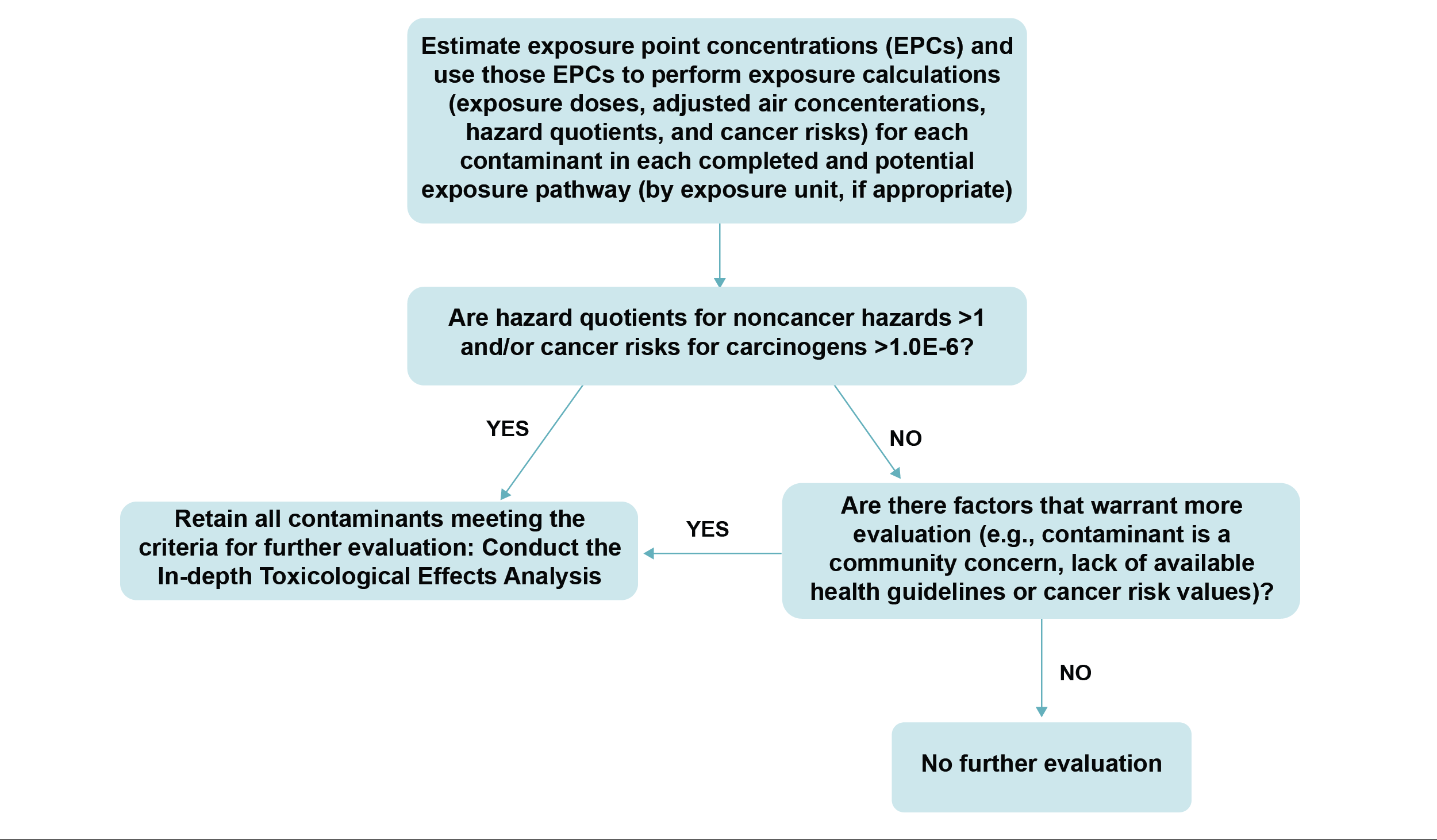Exposure Point Concentrations and Exposure Calculations Overview
Learn how to calculate exposure point concentrations (EPCs); use the EPCs to perform exposure calculations (calculate exposure doses, adjusted air concentrations, hazard quotients, and cancer risks); and evaluate the calculation results to determine what contaminants require further consideration.
Understanding how site conditions may influence the extent to which people come in contact with site contaminants is central to the PHA process. Thus, once the screening analysis has been completed, health assessors estimate exposure point concentrations (EPCs) in completed and potential exposure pathways by exposure unit (if appropriate).
Health assessors then use the estimated EPCs, as well as default or site-specific exposure conditions, to estimate exposure doses and adjust air concentrations. Exposure doses are then used to estimate hazard quotients and cancer risks, which are compared to acceptable levels to see if contaminants need to be carried through the PHA process for further evaluation.
In doing these calculations, the health assessor is considering site-specific conditions, when information particular to a site is available. That is, you examine the likely exposure conditions (e.g., the duration, frequency, and magnitude of exposure) that are unique to your site. Much of the information learned as part of your exposure pathways and screening analysis evaluations will support this effort. (See the figure below for the process and decision logic behind the EPC and exposure dose evaluation phase of the PHA process.)
Note: This section addresses performing calculations for exposure to chemical substances—not radiation or radionuclides. Many complex factors must be considered when estimating radiation doses; therefore, health assessors need to consult with a health physicist when radiation or radionuclides are a concern at a site.
Process and Decision Logic for ATSDR’s Scientific Evaluation of EPC’s and Exposure Calculations

Contaminant-Specific Considerations
Some contaminants require special consideration during the EPC and exposure calculation evaluation. These are arsenic, asbestos, chromium, lead, radionuclides, and trichloroethylene, as well as individual contaminants within groups including dioxins/furans, particulate matter (PM), polycyclic aromatic hydrocarbons (PAHs), polychlorinated biphenyls (PCBs), and per- and polyfluoroalkyl substances (PFAS). There are also some contaminants for which the inhalation minimal risk level (MRL) is not adjusted to a daily concentration (e.g., ammonia, chloroform, hydrogen sulfide), which will need special consideration to ensure the EPC matches the window of exposure from the study used as the basis for the MRL (see more information in the Discrete Sampling Guidance). If your site has contaminants like these, consult with a subject matter expert (SME) or the Associate Director for Science (ADS) group. Also refer to contaminant-specific guidance that is available for some of these special contaminants (see the table below).
Guidance Available for Some of the Special Contaminants
| Contaminant | Resource |
|---|---|
| Arsenic | Recommendations for Default Value for Relative Bioavailability of Arsenic in Soil |
| Lead | Guidance on Evaluating Lead Using EPA’s Integrated Exposure Uptake Biokinetic (IEUBK) Model for Lead in Children and the Adult Lead Methodology (ALM) |
| Particulate matter (PM) | Guidance for Inhalation Exposures to Particulate Matter |
| Per- and polyfluoroalkyl substances (PFAS) | Guidance for the Assessment of PFAS in Fish & Other Aquatic Organisms |
| Polycyclic aromatic hydrocarbons (PAHs) | ATSDR’s PAHs Guidance |